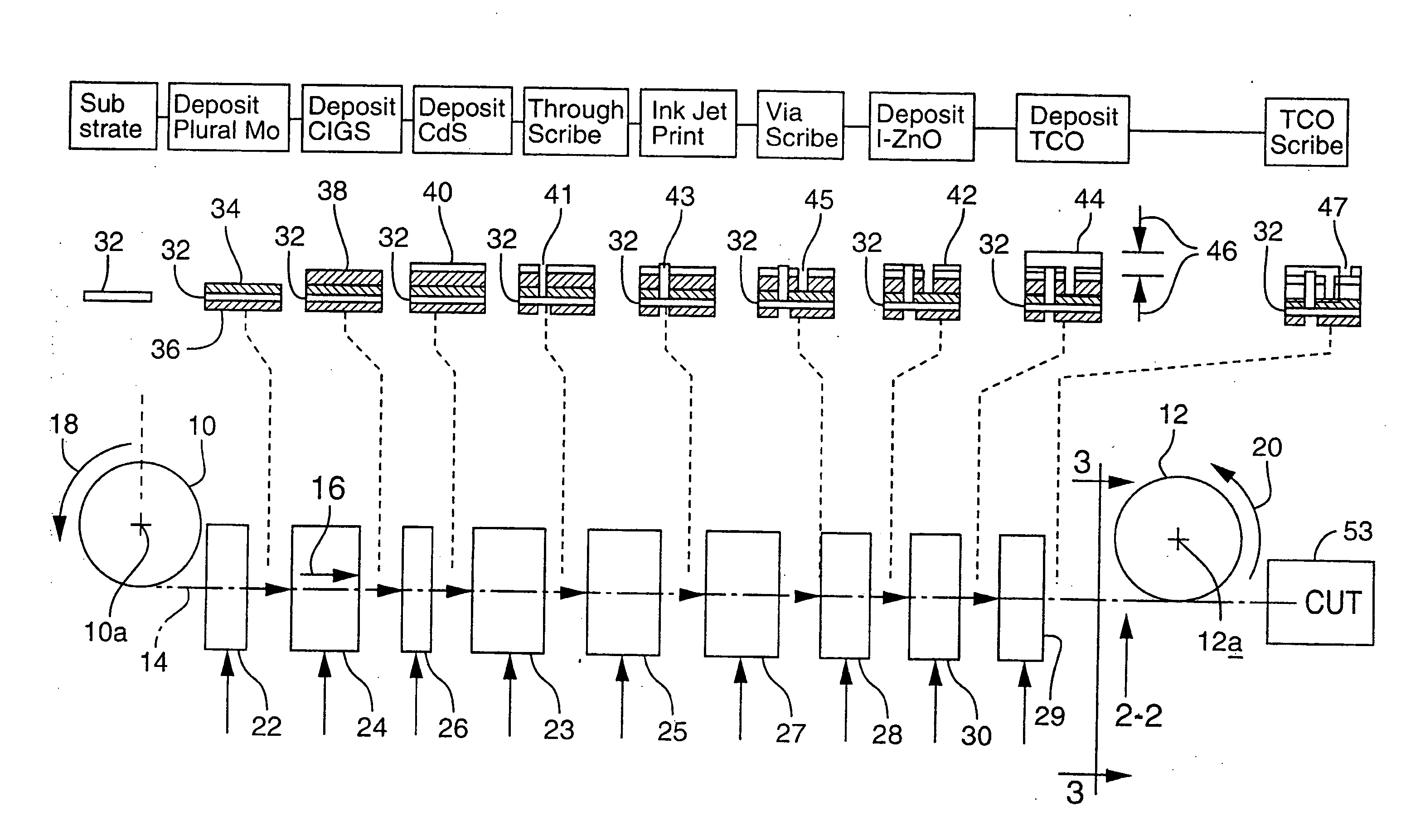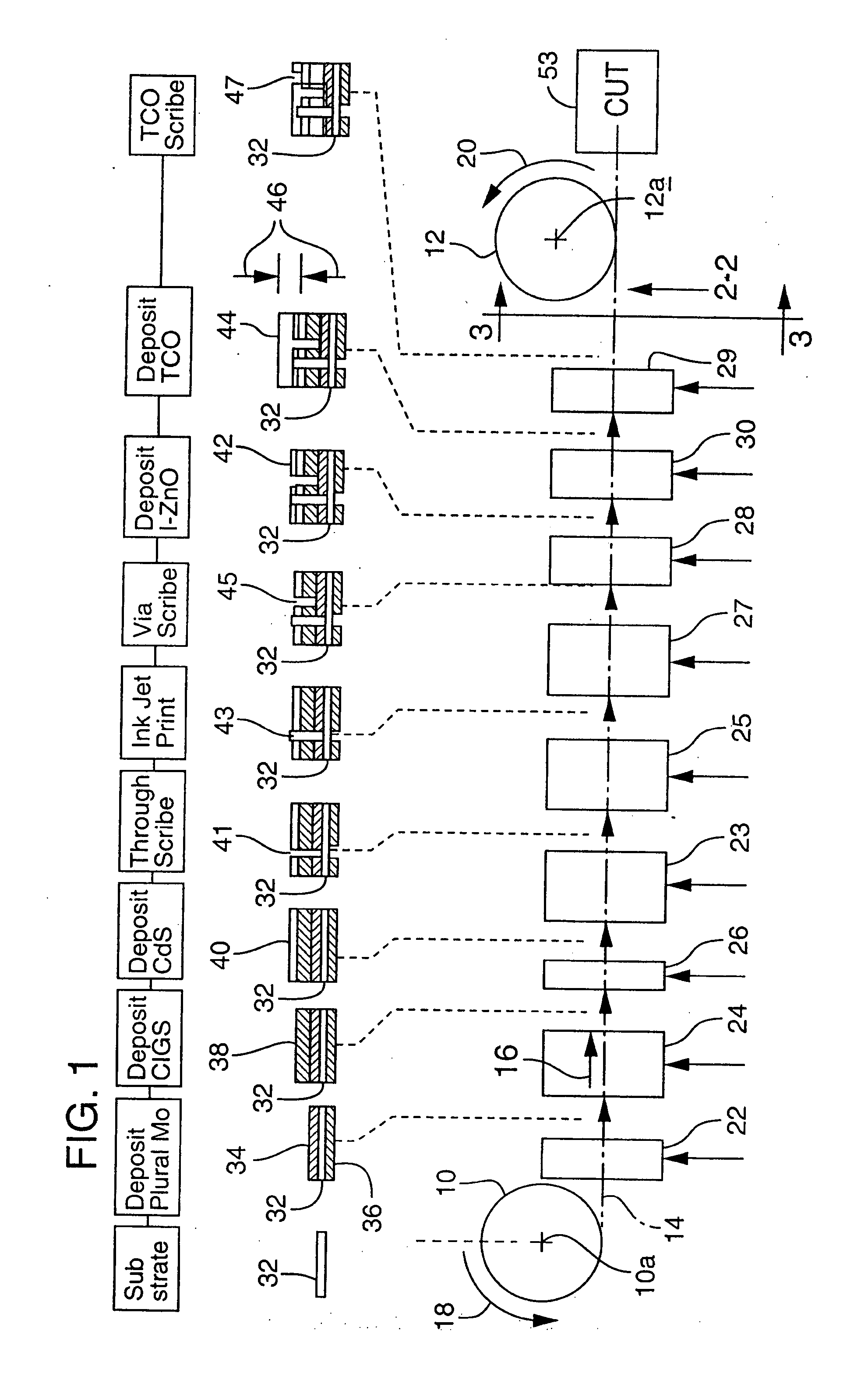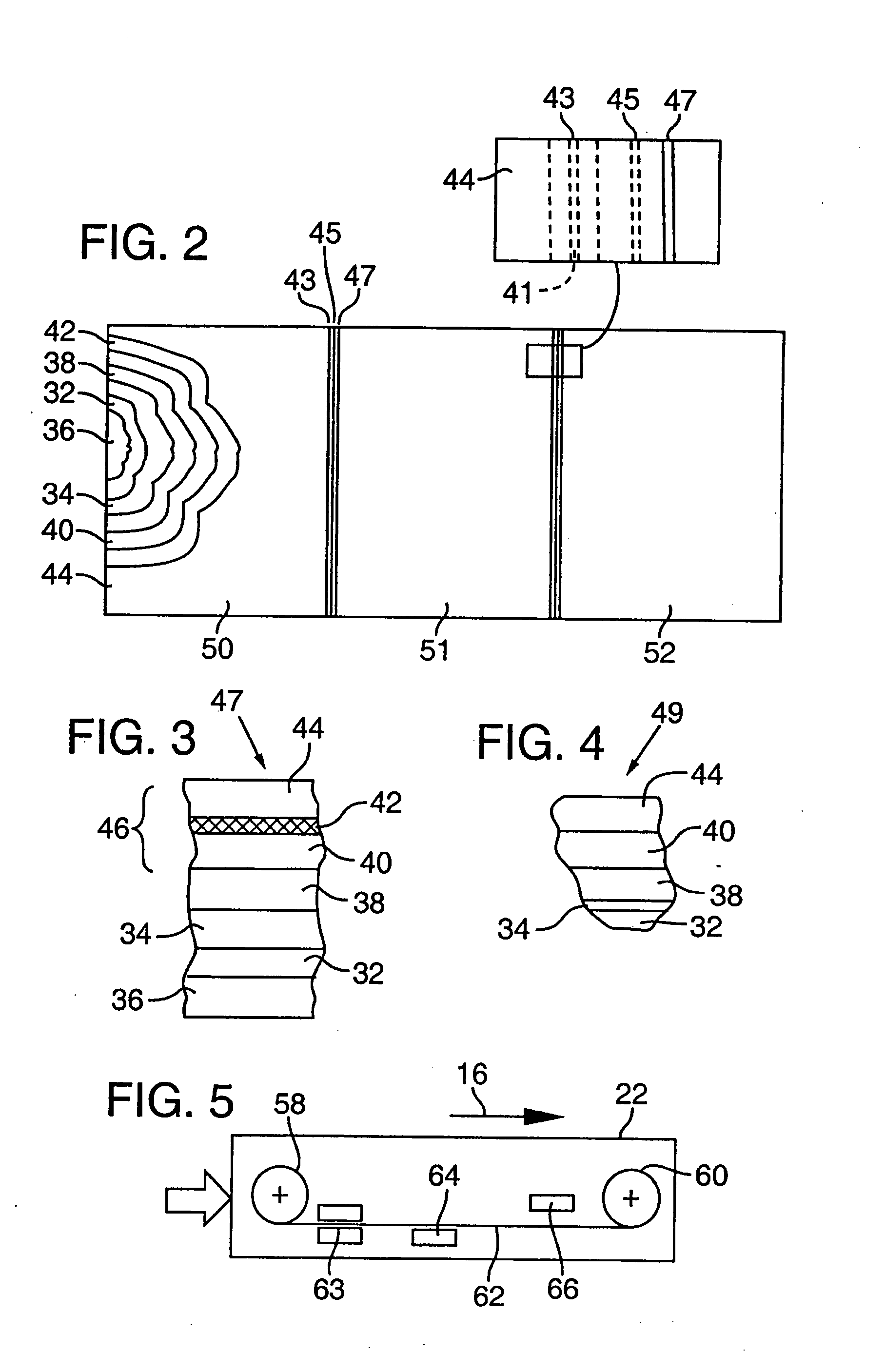Nozzle-based, vapor-phase, plume delivery structure for use in production of thin-film deposition layer
a technology of nozzles and thin films, applied in the direction of sustainable manufacturing/processing, final product manufacturing, separation processes, etc., can solve the problems of high cost of sputtering systems, poor utilization of source (target) resources, and temporal limitations in creating multi-component films, etc., to achieve low cost, reduce cost, and low emissivity
- Summary
- Abstract
- Description
- Claims
- Application Information
AI Technical Summary
Benefits of technology
Problems solved by technology
Method used
Image
Examples
Embodiment Construction
[0050]FIG. 1 illustrates the steps involved preferably in making a new kind of photovoltaic (PV) module in a roll-to-roll, continuous-motion process in accordance with the present invention. Those skilled in the art should understand that, while roll-to-roll, continuous motion processing is employed in the described embodiment, non-roll-to-roll procedures could be used effectively in certain applications.
[0051]FIG. 1 shows two rolls 10, 12, at the left and right, respectively, which symbolize the several roll-to-roll, continuous-motion processing stages employed in the manufacturing of this new kind of PV module. Roll 10 represents a pay-out roll, and roll 12, a take-up roll. It should be understood that rolls 10, 12 are representative of the different pay-out and take-up rolls that are employed in different isolated processing chambers. Thus, there are typically multiple pay-out and take-up rolls used during the overall process.
[0052] A stretched-out, flat portion of an elongate s...
PUM
| Property | Measurement | Unit |
|---|---|---|
| voltage | aaaaa | aaaaa |
| thickness | aaaaa | aaaaa |
| length | aaaaa | aaaaa |
Abstract
Description
Claims
Application Information
 Login to View More
Login to View More - R&D
- Intellectual Property
- Life Sciences
- Materials
- Tech Scout
- Unparalleled Data Quality
- Higher Quality Content
- 60% Fewer Hallucinations
Browse by: Latest US Patents, China's latest patents, Technical Efficacy Thesaurus, Application Domain, Technology Topic, Popular Technical Reports.
© 2025 PatSnap. All rights reserved.Legal|Privacy policy|Modern Slavery Act Transparency Statement|Sitemap|About US| Contact US: help@patsnap.com



